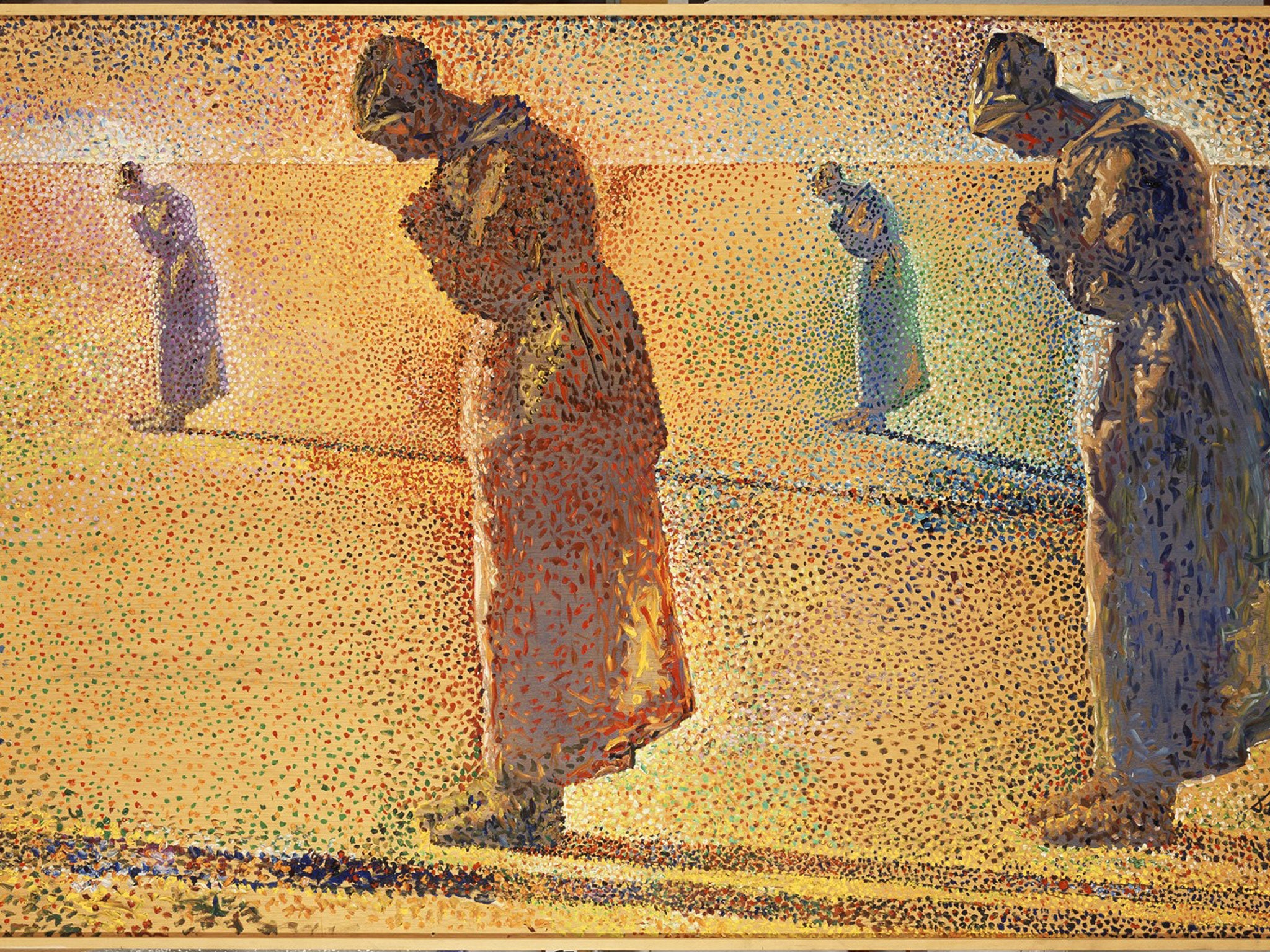IoS visual art review: Dali, Pompidou Centre, Paris
Over-familiarity with the Surrealist has bred contempt, but beyond the showmanship there was a true talent for invention

So, which Dalí poster did you have? The one with the egg and the fingers? Or maybe the melting clocks? The crucifix-over-the-sea one? Whichever, it's unlikely you'll have it now. The object of a million teenage crushes, Salvador Dalí is an embarrassment in later life – the kind of thing you confess to friends when you've had a gin too many; that makes you groan out loud when you recall it on a bus.
He had only himself to blame. A tireless self-promoter, Dalí turned himself into a product – a ringmaster with twirly moustaches, a one-man poster-machine. The problem got worse with age, and he lived to be 84. When he came to London for the International Surrealist Exhibition in 1936, Dalí showed up in a deep-sea diver's outfit. He had, typically, forgotten about an air supply – detail was never his strong point – so that he had to be freed from his helmet, puce and gasping, by a young English poet. Even Dalí's most ardent fans have to concede that it might have been better if the poet hadn't been carrying a spanner.
So impressive was Dalí's talent for self-promotion that curators have also tended to take him at face value and Dalí-ise him – present the mad Catalan in a mad-Catalan way, with attendant Surrealist hoop-la. So the first thing you notice about the Pompidou Centre's new show, Dalí, is how very dull it looks. The second is what a good thing that is.
You walk into Dalí expecting Surrealist razzmatazz and instead find a sober sequence of rectangular rooms with plain white walls, paintings hung in a line and objects displayed in vitrines, as though the works in them were from a serious artist; which, of course, they are. The exhibition's curators have taken the brave decision to ignore Dalí the showman and concentrate instead on Dalí the intellectual – a less entertaining figure, but a very much more interesting one.
So who is this new Dalí? Asked to sum up his contribution to art, the Catalan cheerily replied, "Absolutely nothing. As I've always said, I'm a very bad painter." Treated by the Pompidou as an artist rather than as the Madman of Figueres, this turns out to be not quite true. A work such as Still Life by Moonlight, made in 1926 when he was 21, shows a serious young man getting to grips with Cubism. Dalí then toyed with Purism before settling on his own trademark style, a Max Ernst-ish super-real figuration.
Even this last was not the casually thrown off thing its creator liked to pretend. Whatever else it may be setting out to do, Falaise, also from 1926, can hold its own as landscape: it's actually pretty well done. Likewise, Dalí's self-proclaimed fascination with Millet's Angelus, lent to this show by the Musée d'Orsay, was more than just absurd. (The Moustachioed One spent years badgering the Louvre to have Millet's work X-rayed, claiming that this would reveal its female subject to be fellating a painted-out man.)
His dogged return to the image again and again over half a century, from his first Angelus of 1932 to Dawn, Midday, Sunset and Dusk of 1979, suggests the genuine fascination of one painter for another. And Dalí's references to Bosch and Bruegel aren't just there as inappropriate Surrealist borrowings. They show a serious understanding of the Dutch repertoire of nightmare, channelled through Freud. Dalí's interest in art history may have been meant to be seen as wacky, but it is something else as well.
If two things emerge from the Pompidou's admirably po-faced show, they are Dalí's inventiveness and talent for evasion. It is easy to forget that the forms on those posters Blu-tacked to our teenage bedrooms – the eggs and ovoids, the rocks that morph into flesh and back into rocks again – were all his own work: familiarity with them has bred contempt. So, too, with the unpleasantly acid palette and slimy surface of Dalí's canvases. Framed on a gallery wall, his capacity for seeing double – for finding the precise optical tipping-point between the two objects in Apparition of a Face and a Fruit-Dish on a Beach – feels like something akin to genius.
Perhaps the biggest favour this show does, though, is to the older Dalí. Had the English poet not unscrewed that diving helmet when the artist was about to expire at the age of 34, we would have a very different view of him. The egg-forms and trompe l'oeil and Freudian jokes had all been done by then: it was the subsequent 50-odd years that turned them into clichés. But Dalí didn't simply go on churning out Surrealist images, as their posterised ubiquity suggests. He spent that last half-century staging performances, painting Sigmar Polke-dots and making holograms of Vélazquez's Las Meninas. By then, though, we all thought we knew who Salvador Dalí was, and what. The Pompidou's show is a useful reminder that he was also a very good liar.
To 25 Mar (www.centrepompidou.fr)
Critic's Choice
Here's a jolly Christmas pressie from the folks at London's Kew Gardens – free entry. It's the perfect excuse to visit David Nash's large-scale wooden sculptures among the plants and trees, plus drawings and paintings indoors (free till 4 Jan; Nash exhibits till April). At the White Cube in Bermondsey, forget walking round the sculpture and go right through it – Antony Gormley's Model is a huge, metal, roughly body-shaped building that you can stroll through (till 10 Feb).
Subscribe to Independent Premium to bookmark this article
Want to bookmark your favourite articles and stories to read or reference later? Start your Independent Premium subscription today.

Join our commenting forum
Join thought-provoking conversations, follow other Independent readers and see their replies